Depending on who you talk to, 2006 was either a very good year
for aviation, or a year of much foreboding.

 This was a year... in which
general aviation continued to make much progress, but saw the
specter of user fees threatening it at every corner.
This was a year... in which
general aviation continued to make much progress, but saw the
specter of user fees threatening it at every corner.
This was a year... in which the F-22 and the
F-35 flew, but the reality of budget tightening threatened both
programs.
This was a year...in which the Airlines made
progress, slow though it may be, from the brink of bankruptcy to
the brink of profitability -- however at the cost of their
employees, stockholders, and the trust of the American public.
This was a year... in which business aviation
continued to thrive, but also a year in which it continued to take
flak from a media that didn't understand it, an FAA that didn't
value it, and the airlines who covet their prosperity.
This was a year... actually a great year for
sport aviation, as the sport pilot community saw blue skies for the
first time in a long while, and new airplanes filled the sky at a
rapidly increasing rate... but the costs of entry into the LSA
community still seems to be way too much for the average Joe to
handle.
This was a year... in which the space shuttle
got back to business, the commercial spaceflight industry made
incremental progress, and plans for the future on both sides of the
aisle moved forward... but to all intents and purposes the progress
has been marginal, and far less than what people expected by
now.
So, okay... 2006 was a mixed bag and it's bloody hard to
determine which stories or story topics truly line up at the top of
a list that we've decided to limit to a solid dozen entities --
presented in quasi-alphabetical order. But warts and all, this is
what we've come up with -- the stories that made a splash in 2006
-- while also containing some promise (good and bad) for the
future. Read them, think about them, and let us know what YOU
think.
Baby Steps: NASA v Commercial Space
It's been a few years since the loss of a second Space Shuttle
brought tragedy to the aerospace world, and a few years since the
glorious successes of SpaceShip One. To many, the slow
painstaking progress of bringing the Space Shuttle program back to
an operational mode has been endemic of a NASA that no longer has
the "game" it once had.
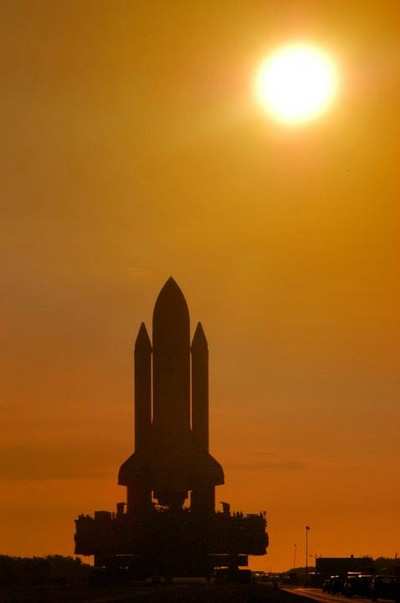
Mind you, the shuttle has now flown several times with great
success, and pulled off some amazing missions (the last, in
particular, was an amazing effort, bar none). But let's face it,
the grand ol' space-bird is a lame-duck, and instead of advancing
the art of the space plane; political expediency has decreed that
the next generation will be based on technology that got us to the
moon nearly 40 years ago.

I'm not impressed... few others are... and for a nation that not
only prided itself, but demonstrated, its phenomenal technical
acumen in aerospace, many see the new lunar initiatives as
embarrassingly 'conservative' and shortsighted. We so agree. The
sad part of this is that, ultimately, based on the intimate
knowledge we have within the NASA community and the many friends
and associates we've come to know from that talented group, NASA
STILL has the cojones to be able to do much better than the Space
Shuttle or the next generation Saturn clone, and (in the
process) truly further the art and craft of aerospace. But
-- the politicians won't let them, and a jaded public
won't pay for it.
We can get into all the nickels and dimes of how the spaceflight
community has truly benefitted the public in so many unnamed and
(probably) unknown ways, and how every dime spent on spaceflight
has comeback as Oh-So-Many dollars -- but the public doesn't want
to hear it, the politicians won't sell it, and it's up to the
private space entrepreneur to go them one better.

So... what about the private space entrepreneur? Well, 2006 was
not his (or her) best year... at least not from what we can see at
this point. There are a number of exciting projects in the works
but few of them are seeing airtime and none of them are seeing
vacuum.
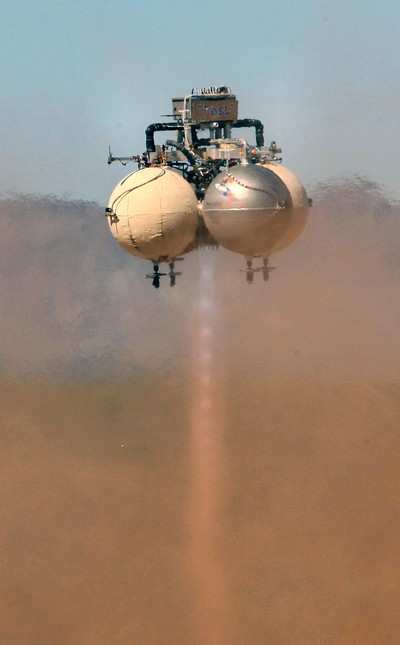
At this year's XPrize Cup, we saw extraordinarily exciting
technologies demo'ed by Armadillo Aerospace, whose Pixel and Texel
robotic rockets truly amazed the space veterans who came to judge
their progress. However; Armadillo is but one of several dozen
companies that promise great things, and are yet to produce them.
This is not an indictment of the private space industry, mind you,
as we all know that progress is going to be slow and tough --
but we sure wish we'd see some of the excitement we saw in 2004
when Burt Rutan rocked our world, Mike Melville tasted space,
and Brian Binney set records.
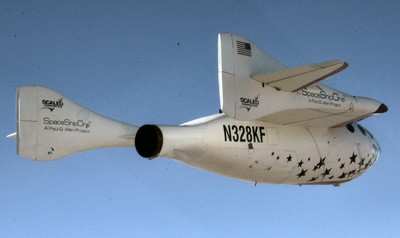
In the meantime, Spaceship Two is tightly under wraps, the
Virgin Galactic folks are saying very-very little, and the only
member of the XPrize community to make it to space this last year
was a lovely Iranian woman, Anoushe Ansari, whose family underwrote
the original XPrize competition -- but still had to pay 20 plus
million dollars for the privilege of using outdated
Russian-American technology in order to look down upon the "little
blue marble."

We have great hopes for 2007 and if push comes to shove, were
still very "up" on the private space entrepreneurial race, but dear
Lord, we sure miss the excitement we felt a few years ago, and we
hope to feel it again soon.
Boeing/Airbus Skirmishes
The war continues...... and the expense of an unending battle
makes those involved weary with both the cost as well as the
lack of a clear winner in what has become one of the world's
most hotly contested battles -- the aviation world, that is.
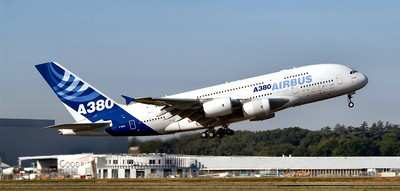
No, we're not talking about Iraq, we're talking about the ever
present war between America's Boeing, and the European Airbus
consortium. A few years ago, it sure appeared that Airbus had the
war all but won. They were racking up huge sales, introducing
exciting new airplanes, and riding the wave of the latest
technologies in such a way that even mighty Boeing was ill-equipped
to match.

That was then... this is now.
Airbus' mighty gamble on the A380 has stumbled -- and stumbled
hard. Aircraft that should have been delivered by now will not
be delivered until 2008. Attempts to compete with Boeing's massive
wager on the Boeing 787, with a hastily conceived competitor called
the A350, were met with snorts of derision by Airbus' biggest fans.
It was back to the drawing board for the A350, continued time at
the drawing board for the A380, and despite the A380's recent basic
certification, it's going to be a good long while before the Airbus
behemoth graces the skies of the world while undertaking REAL-LIVE
commercial service.
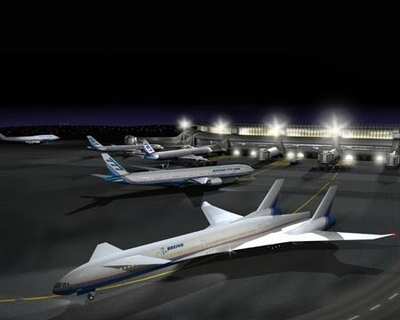
In the meantime, Boeing has gotten smart (who knew?). After an
abortive stab at a new design program based around a slightly
faster than normal commercial airline concept called the Sonic
Cruiser (shown above), and the lack of near immediate interest from
their normal clientele; Boeing not only went back to the drawing
board but went back to their marketing team and asked them the big
question... "what can you sell -- REALLY?"
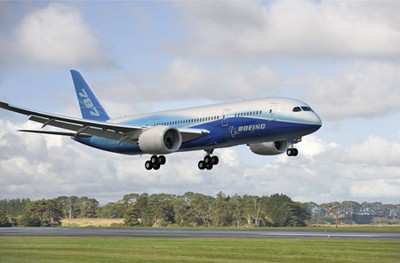
The ultimate result was an aircraft that we have come to know as
the 787. The aircraft is a refinement of all things Boeing, and a
few technologies that Boeing's flirted with over the years, but
never fully adopted. This is an efficient airplane, this is an
efficient airplane in the way that this class of airplanes have
never been so efficient before. This is an aircraft that is
designed with aggressive adherence to the dictum that this
airplane had to be better than anything they have ever done. While
the rumor mill insists that the 787 is having weight problems
and some fabrication issues; a first flight in the not too distant
future is in the cards, and our sources indicate that the 787
program is doing far better than the naysayers would like to think
-- and certainly far better than Airbus hopes.
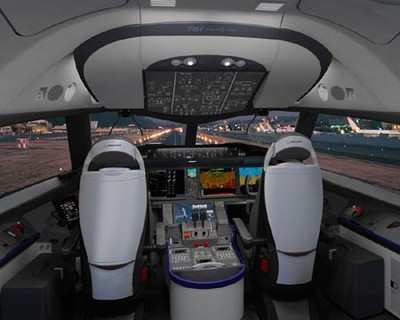
2007 will be a watershed year for Boeing, as fattening order
books for the 777, various versions of the 737, and the new 787
prove that Boeing still has "it" and is in a position to compete
head to head with Airbus. At that point, it stops being a war and
starts being a horse race... and they're off!!!!
Crash Consequences -- Comair 5191/Lidle NYC
Accident/Gol-Embraer Midair
Airplanes crash. Sometime, airplanes crash a lot. And no
one knows that more, or seems to love it more, than the
general media on a slow news day.

2006 was possibly the most specific example of such thinking in
years. We at Aero-News have an unusual viewpoint as we not only
have to maintain a lofty standard for accuracy and fairness on
behalf of the aviation community, but are often put in the position
of having to educate and correct our brothers and sisters
in the general media. In three of the most publicized
accidents of 2006, ANN played a significant role within the
aviation community, as well as with the general media -- and gained
new and additional insights into both.
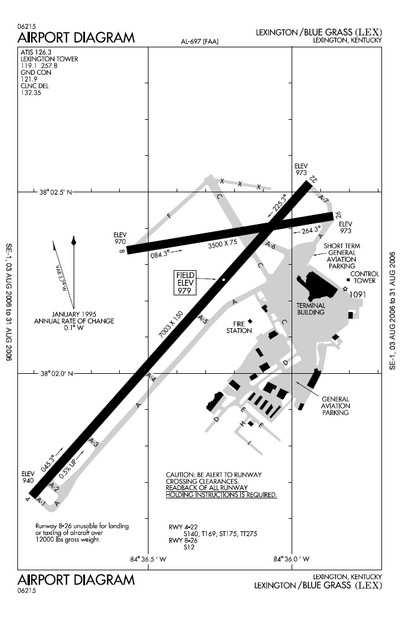
Overall, we can't say we were all that impressed with the
general media's coverage of aviation this year, especially when
they went into feeding frenzy mode. Several notable reporters,
mostly those with some kind of aviation background, did try to
get it right and we applaud them for that... most notably CNN's
Miles O'Brien. What was particularly compelling about 2006 was
the fact that in this day and age, when aviation is so much safer
than it has ever been, "airplane gore" is still like manna from
heaven to many a journalist on deadline. And to
many journalists on a deadline, aeronautical facts are not
necessarily a priority, while the body count is. Some things
never change.
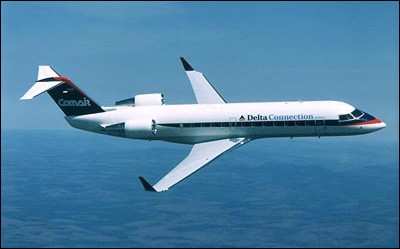
Three crashes, in particular, made the news this year -- each in
some unique ways. The Comair crash in Lexington, Kentucky was
fascinating to us, in particular, because this was the year that
ANN's "News-Spy" network really hit its stride. Within minutes
of the accident, ANN readers from the area were on the phone
to ANN headquarters with strong and compelling evidence to show
that this doomed CRJ had taken off on the wrong runway -- and in
very short order, thereafter, we had proof. Through the help of
ANN's sources at the scene, our News-Spy network, and some good
journalism from the folks at ANN HQ, we broke the story about the
CRJ's use of the wrong runway hours before it was confirmed by the
National Transportation Safety Board and long before any other news
source. At the same time, this got us a lot of attention, and put
us in touch with a lot of news organizations that we had not worked
with in the past. In most cases we found people who were trying
hard to get the facts -- but still being pushed by deadline
pressures. In other cases we ran into journalists were more
interested in the prurient aspects of the accident, then the
fascinating details that were emerging showing that the
national aviation system (as safe as it may be) still apparently
had some flaws to be worked out. It took far longer than we had
hoped for that message to get through -- once the local media tired
of touting how many people burned to death.
 On another score, the
New York crash of a well-known sports figure in a technologically
advanced aircraft produced some surprisingly fair coverage,
overall, once everybody got over the jitters of the initial
announcement that some kind of plane had hit a building in New
York. Once we recovered from the 9/11 flashbacks, a surprising
number of local and national journalists touted the safety features
of the aircraft involved, the proper rules and practices in force,
and the fact that even well-trained pilots like the flight
instructor on board that aircraft and his student, occasionally
make mistakes. We could have done far worse that week... though
we were particularly distressed that the FAA caved in to
political pressure so quickly in announcing new restrictions to the
airspace. Thanks to the efforts of a number of aviation
organizations as well as the manufacturers involved in this
accident setting straight many journalists who were looking for the
less seemly aspects of this accident, we believe the general
media got the message fast enough and clear enough that many of the
expected inaccuracies did not occur.
On another score, the
New York crash of a well-known sports figure in a technologically
advanced aircraft produced some surprisingly fair coverage,
overall, once everybody got over the jitters of the initial
announcement that some kind of plane had hit a building in New
York. Once we recovered from the 9/11 flashbacks, a surprising
number of local and national journalists touted the safety features
of the aircraft involved, the proper rules and practices in force,
and the fact that even well-trained pilots like the flight
instructor on board that aircraft and his student, occasionally
make mistakes. We could have done far worse that week... though
we were particularly distressed that the FAA caved in to
political pressure so quickly in announcing new restrictions to the
airspace. Thanks to the efforts of a number of aviation
organizations as well as the manufacturers involved in this
accident setting straight many journalists who were looking for the
less seemly aspects of this accident, we believe the general
media got the message fast enough and clear enough that many of the
expected inaccuracies did not occur.

Finally there was the story that didn't get the attention it
deserved. The tragic GOL 737/Embraer midair/fatal crash into
the jungles of South America merited a few headlines and soundbytes
on the evening news, but the desperately necessary follow-up to a
significantly dramatic story never came.
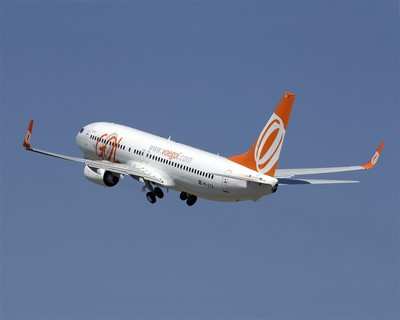
Brazilian officials, in apparent need of a scapegoat due to
ponderous issues involving its air-traffic network, decided to play
sky cop. Not only did they play sky cop, they played
judge, jury and executioner poorly. And long before any
ethical or responsible investigative agency could have
produced a solid investigation of the tragedy, the Brazilians were
spouting nonsense -- and positing causes. They made statements that
were not backed up by facts, they over emotionalized a tragedy, and
it became apparent that they were attempting to criminalize what
should have been a professional and
dispassionate investigation. This is truly dangerous
territory. The investigative process, if it is to work properly,
has to be unemotional, clinical, and devoid of outside
interference. The Brazilians have doomed the GOL investigation with
their unfairness, inaccuracy, and turned it into a political
football. This is a story I wish had been seen outside of the
aviation press, far more than it was, and one that needs to be
publicized far and wide, as the danger to the future of aviation is
extraordinary if we cannot conduct fair and open investigations
without the specter of political interference. I hope 2007 is
devoid of such nonsense. We shall see...
Declining Glories: The Airline Career
 Remember when you were a
kid and an airplane flew overhead?
Remember when you were a
kid and an airplane flew overhead?
Remember how you looked upon pilots as they walked through airports
resplendent in their black or blue uniforms with silver and gold
braid?
Remember how you admired those who made a living out of flying
huge aluminum tubes through the ether, bringing families to their
loved ones, businessmen to their clients, and people to grand new
adventures?
And, of course, as you grew older it may not have escaped you that
airline pilots made good money, as did their brothers and sisters
in the maintenance and service fields...
Boy... didn't you grow up wanting an airline job?
Folks, those days are gone -- and gone for good. The glory
days of the airline world, and more specifically the airline
career, is a nearly comical but no less tragic ghost of former
greatness. Greed, financial mismanagement, poor regulatory
oversight, and a nearly psychotic competitive zeal have ruined the
airline industry. Worse than that, intense and (in many cases)
positive working relationships that existed between the people who
did the work, and the people who called the shots, has been all but
destroyed.
Robber barons disguised as airline managers have broken the
faith between their workers and the promises they made over decades
by managing their companies poorly, and raiding promised pension
and medical plans. Jobs that once carried great esteem have been
changed into nearly unbearable chores that are worth far less to
the worker than they were but a few years ago.
Yes, the airline industry suffered horribly as a result of 911,
but the fact of the matter is that analysts can point to the seeds
of this industry's destruction long before September of 2001, and
despite all the tragedies that occurred that fateful day, there are
still a few companies that have not only survived but thrived
because they did not give in to the greed and
stupidity espoused by their competitors. We realize these are
incredibly strong words, but we cannot find anyone who can truly
defend the overall conduct of the airline industry, and more
important, the way in which they have cheated their staffers.
 The stripping of pay, pensions and
benefits from thousands of workers who desperately need those
wages and programs (and who had no alternatives in place -- or
warnings of any kind that they might need one) seems to us to
be a criminal act --especially when so many of the ills and
behaviors that created this mess are still in place.
The stripping of pay, pensions and
benefits from thousands of workers who desperately need those
wages and programs (and who had no alternatives in place -- or
warnings of any kind that they might need one) seems to us to
be a criminal act --especially when so many of the ills and
behaviors that created this mess are still in place.
Unfortunately, Congress, who has padded their pockets for years
with airline lobby dollars, has given them a pass on these
transgressions-- and to all those young men and women who might
still dream of a career flying or supporting the airliners of the
future, we strongly recommend you look at another industry, as this
one is busted.
 Aero-News: Quote of the Day (04.28.25)
Aero-News: Quote of the Day (04.28.25) ANN's Daily Aero-Term (04.28.25): Decision Altitude (DA)
ANN's Daily Aero-Term (04.28.25): Decision Altitude (DA) ANN's Daily Aero-Linx (04.28.25)
ANN's Daily Aero-Linx (04.28.25) Airborne-Flight Training 04.24.25: GA Refocused, Seminole/Epic, WestJet v TFWP
Airborne-Flight Training 04.24.25: GA Refocused, Seminole/Epic, WestJet v TFWP Aero-News: Quote of the Day (04.29.25)
Aero-News: Quote of the Day (04.29.25)






















